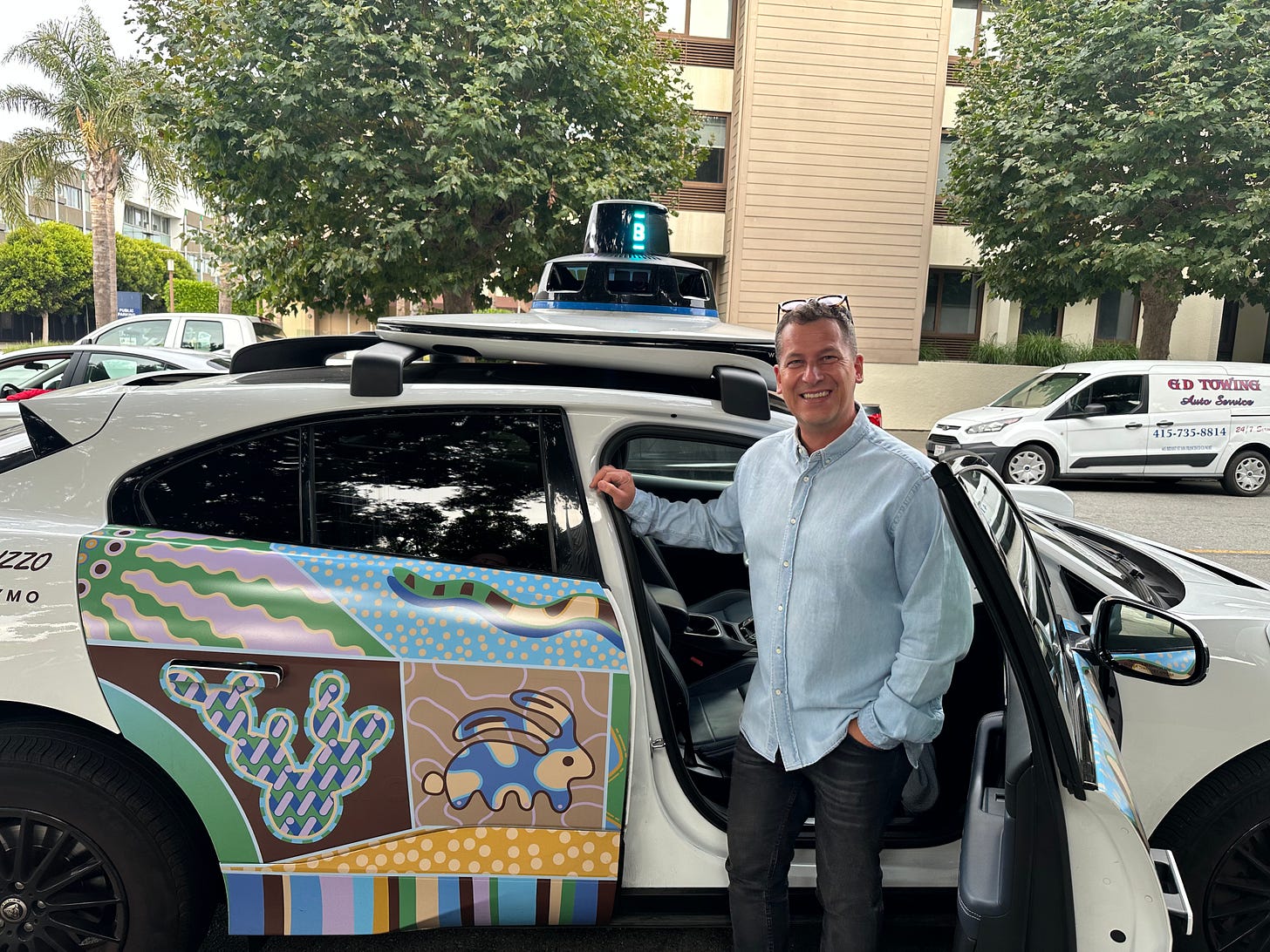Notes from San Francisco, end of an era from Typepad, and the future of cars
I'm back from a visit to the Bay Area, and having chatted to local clients, colleagues and friends out there to get a sense of social media, I feel we're at a pivotal stage of the internet's evolution
I have just returned from a brief trip to San Francisco to meet with some of my colleagues and clients out there, and I hosted a fantastic dinner event at Chotto Matte to discuss some of the upcoming developments in social media that are shaping brand marketing, creator culture, Gen Z / Alpha and society more broadly. It was a very insightful, fact-finding and opinion-finding trip from London for me.
Some of the conversations I had with SF locals got me thinking about how much of the fabric of social media today is touching on the foundations from exactly 20 years ago, which was such a formative time in the grand scheme of social media.
20 year anniversary, and farewell to Typepad
We owe so much of today’s social media ecosystem to a single blogging platform, and one that was not too dissimilar to Substack back in its heyday. From the connections that it brokered, to the innovations it ushered in, Typepad, which for over 10 years was where I wrote a blog about the world of PR and social media, that I called Drew B’s Take on Tech PR.
In its heyday, everyone who was active on social media was a blogger. Blogging ushered in social networking which then became social media. And the biggest blogging platform was Typepad.
Well, Typepad closed down for good this week, marking the end of an era for such an important part of the fabric of modern day social media.
I shared this news earlier in the week in a post on Linkedin, thanks to a nudge from one of the OG bloggers and an inspiration to me in the early days,
. I mentioned just some of the bloggers that I connected with 20 years ago in those early days, and most of them popped up in the comments, it was amazing.So if you have an old Typepad blog like I do, this was the week to export your content so that you can preserve it, and even reincarnate it somewhere else if you like. An archive of my old blog is available to view on Wayback Machine. And I’ve also exported the blog in full, so that its content is still online over on Wordpress. Doesn’t look the same as Typepad, but all the posts are there and the comments saved.
The future of long form social
The importance of written, longer form, discoverable internet content has never been greater, due to the rise and rise of AI, and forces pulling in other directions such as ephemeral and video social content.
AI is a very interesting development due to its recency and velocity. With every AI search, a vast slew of social media content on the longer form written parts of the social web shape the results that AI summarises and that we read and listen to.
But whilst AI is helping boost the popularity of old school social, some say AI is killing the internet. That’s the headline from the latest piece in The Economist on this topic, see here.
So what does the future hold when there’s no Typepad, the web has been killed by AI, will we still have Substack and other social platforms? Will they hold value? Perhaps social media is the future of the internet, if AI is the death of the web. Which means then that, perhaps AI will bring it all together, and not kill it after all. Food for thought.
The future of cars, SF style
Just before my trip to San Fran, I was alerted to a recent development in self-driving cars that is working its way through certain cities in the U.S. by an old university friend of mine, the Executive Director of the Road Safety Foundation UK, Dr Suzy Charman, or Safety Suzy as she’s known in the UK media. Suzy shared with me just a week previous that she was in Atlanta testing the newest Waymo self-driving taxis which were now fully operational there, and she said to me that they were also in San Francisco too.
Nothing prepared me for what I would find upon arriving in San Fran. Self-driving taxis where everywhere. The first one that I saw, I thought was a Google Streetview car, as the Waymos have countless cameras attached to every corner and surface of the outside of the car, including a spinning camera on the roof. But then I saw another and another, and asked the driver in my car and he told me that Waymos already outnumber regular taxis in the city.
So I spent my week in San Francisco travelling by driverless taxi, and it was mindblowing, brilliant, it felt very safe, very convenient, and the future. You book where to pick up and drop off on the app, you press the ‘let’s go’ button when you enter the car and then the AI dashboard says a few welcoming words to you before setting off, and it’s a very comfortable and cheap journey. Waymo taxis seemed to be around half the price of other taxi fares I checked.
You get people taking photos and videos of you when you’re in one, as many people in the city still find the sight of them a bit of a surprise. One eery sight for me was that, opposite my hotel was a Waymo car park. It gave me I Am Robot vibes, the scenes where robots are kept in vast holding areas and they kind of interact with one another in a passive way. The Waymo car park was like that. Totally bizarre.
But it’s clear that, once the self-driving cars can navigate all roads, then they will be everywhere. And maybe their convenience and safety will mean that they won’t just replace taxis either. One thing they will rely on is an accurate and dynamic understanding of the world around us, which leads me to the last article I read in the last week worth sharing here.
AI and the road to superintelligence
This long read by Tim Bradshaw and Cristina Criddle in The FT from earlier this week titled: “AI groups bet on world models in race for ‘superintelligence’” is well worth a read. It explains how the future of the web, of AI and I’m guessing of cars on the road, will be relying on how “Google DeepMind, Meta and Nvidia are developing systems that aim to better understand the physical world.”
“Google DeepMind, Meta and Nvidia are among the companies attempting to gain ground in the AI race by developing systems that aim to navigate the physical world by learning from videos and robotic data rather than just language.”
…The potential market for world models could be huge, almost the size of the global economy, according to Rev Lebaredian, vice-president of Omniverse and simulation technology at Nvidia, as it brings the technology into the physical domain, such as the manufacturing and healthcare sectors.
I’m looking forward to seeing how this area develops anyway, and not just because I do now love an AI robotaxi.




